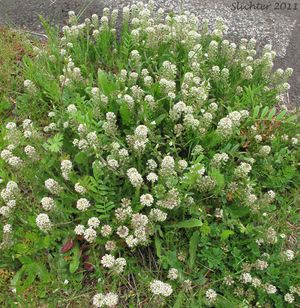Difference between revisions of "Pepperwort"
From Wikiwel
(Created page with "Other Names : Lepidium Sativum<br>The leaves, roots, as well as seeds of this plant are used in cooking as they are extremely nutritious and also therapeutic in nature. The fl...") |
|||
| Line 1: | Line 1: | ||
| + | [[File:Pepperwort.jpg|thumb|300px|left|Lepidium Sativum]] | ||
Other Names : Lepidium Sativum<br>The leaves, roots, as well as seeds of this plant are used in cooking as they are extremely nutritious and also therapeutic in nature. The flowers of this plant are either white or light-pink in color. | Other Names : Lepidium Sativum<br>The leaves, roots, as well as seeds of this plant are used in cooking as they are extremely nutritious and also therapeutic in nature. The flowers of this plant are either white or light-pink in color. | ||
==Special Precautions of Pepperwort== | ==Special Precautions of Pepperwort== | ||
Revision as of 05:42, 29 October 2017
Other Names : Lepidium Sativum
The leaves, roots, as well as seeds of this plant are used in cooking as they are extremely nutritious and also therapeutic in nature. The flowers of this plant are either white or light-pink in color.
Special Precautions of Pepperwort
Health Benefits and uses of Pepperwort
- This herb is the best source of iron and is hence recommended in the treatment of iron-deficiency anemia.
- It is also rich in folate, calcium, ascorbic acid, tocopherol, and beta-carotene.
- Garden Cress seeds are loaded with not just protein, but also linoleic and arachidic fatty acids.
- Since they contain phytochemicals that mimic estrogen to some extent, intake of these seeds is known to regulate menstruation and stimulate milk production in lactating mothers. That is precisely why women are given foods containing Garden Cress following childbirth.
- Pepperwort is rich in sugars, protein, starches and essential nutrients (especially iodine and iron). * It contains alkaloids, whole fibre, lipids, twenty amino acids (including arginine, serine, clycine, valine, histidine, aspartic acid and glutamic acid, etc.), beta-ecdysone, beta-sitosterol, hydrolyzable carbohydrates, fatty acids (including linolenic, palmitic and oleic acids), glucosinolates, isothiocyanates, iodine, phosphorus, potassium, iron, magnesium, zinc, calcium, steroid glycosides, saponins, sitosterols, stigmasterol, tannins, vitamin B1, vitamin B2, vitamin B12 and vitamins C and E.
- The glucosinolates found in the root of the pepperwort help to combat serious invasive infection. They are the substances that are also found in other members of the Brassicaceae family (including broccoli, cabbage, cauliflower and other cruciferous vegetables) and are said to be particularly effective in building the body’s defences against serious malignant illnesses.
- used to treat anaemia, hypothyroidism, chronic fatigue syndrome and can enhance energy, stamina, athletic performance, memory, mental clarity and fertility.
- also useful to treat female hormone imbalance, menstrual problems and symptoms of menopause.
- used for weak bones (osteoporosis), depression, constipation, stomach cancer, leukaemia, HIV/AIDS, tuberculosis, erectile dysfunction, to arouse sexual desire and to boost the immune system.
